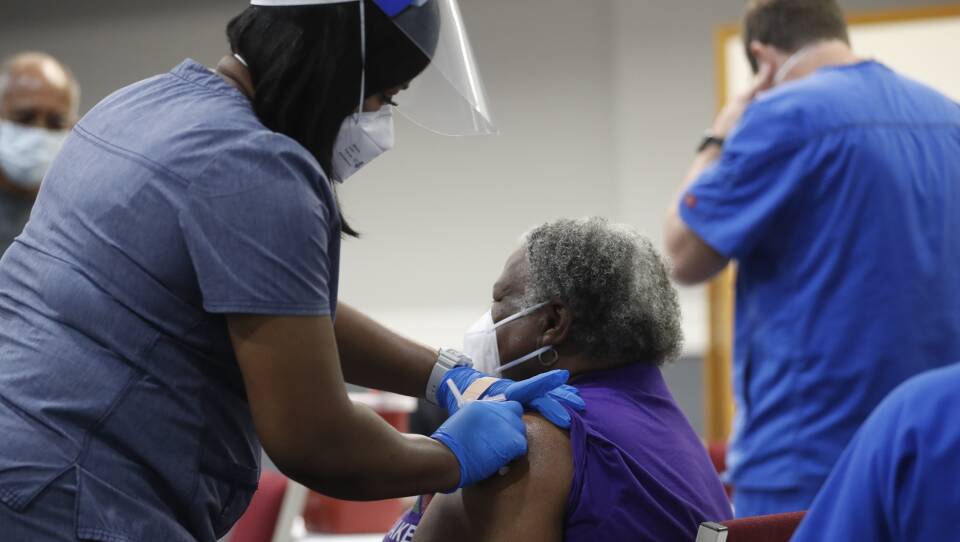Black and Hispanic communities continue to bear a disproportionate burden of cases, hospitalizations and deaths four years into the COVID-19 pandemic.
Research from the Boston University School of Public Health shows that COVID-19 death rates in Massachusetts are consistently higher among Hispanic and Black residents compared to white residents across all adult age groups.
Now, there’s a new COVID-19 variant called FLiRt.
“We know that there’s a variant that is spreading overseas,” said Michael Curry, president and CEO of the Massachusetts League of Community Health Centers on Boston Public Radio. “It’s likely to come here as all variants do. They sort of spread across the globe.”
Cases and hospitalizations for COVID-19 remain low in the state but there has been a gradual increase in the amount of detectable virus in wastewater in Eastern Massachusetts since late April.
As new COVID-19 variants continue to emerge and the virus becomes endemic, Curry emphasizes that people of color suffering from long COVID often struggle to receive adequate treatment. The ongoing lack of comprehensive understanding of the virus among health researchers, exacerbates this issue for communities of color.
Curry said that people struggling with long COVID “are not going back to normal life”.
“When [long COVID] exists, our providers generally aren’t prepared to recognize it,” he said.
Most patients at long COVID clinics and recovery centers in Massachusetts are white, according to data collected by Linda Sprague Martinez, a professor and health equity researcher at Boston University.
“People aren’t believing Black and brown folks and people generally, but particularly Black and brown folks, who have long COVID,” Curry said. “So therefore they’re having to navigate these conditions, these symptoms, without a diagnosis.”
Curry pointed to Jacqui Lindsay, who works with the Boston COVID Recovery Cohort as part of the NIH’s RECOVER study on long COVID, as a beacon of hope for the future.
Curry also hopes future providers will be taught how to work with diverse patients. “You have to have the diversity in those schools, make that a priority. And what we’re saying is that if they don’t have the diversity, then the professors and the people who build the curriculum don’t elevate [diverse] issues,” he said.
“[Health providers] need to come out knowing how to treat people of every race, color and creed of every background. And we are not preparing our next generation of providers to do that yet.”





